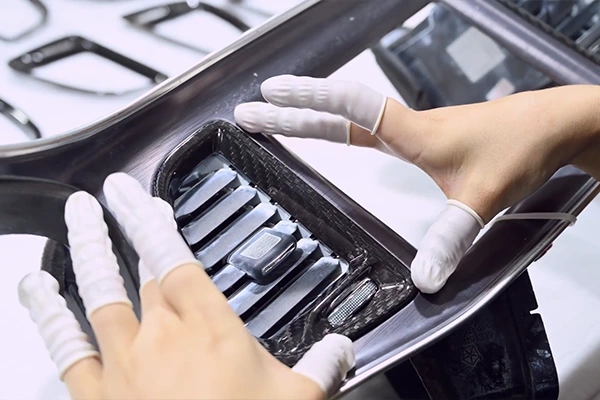
Source: pexels
Carbon fiber is a special type of fiber composed of carbon elements, which has characteristics such as high temperature resistance, friction resistance, conductivity, thermal conductivity, and corrosion resistance. Therefore, carbon fiber is widely used in the automotive industry. We can see the figure of carbon fiber car parts in areas such as the rearview mirror shell, interior door panel, gear lever, door handle, racing seats, etc.
Although carbon fiber in cars is a unique material, it does not require the use of special maintenance processes to maintain its optimal condition. This article will show you some of the most common carbon fiber cleaning processes.
Why It’s Important to Clean Carbon Fiber Cars Properly

Source: pexels
Let’s first talk about what carbon fiber is. Carbon fiber is a polymer that, when woven together, producing a very sturdy material that is also very lightweight. Carbon fiber is stronger and harder than steel,making it an ideal manufacturing material for many parts.
The problem with carbon fiber is that if not protected, it can quickly deteriorate. We allove cars with beautiful and shiny finishes. If exposed to ultraviolet radiation without protective agents for a long time, carbon fibers may start to turn yellow and fade. Meanwhile, carbon fiber components are prone to scratches, stains, and other types of damage, which is why we need to clean, polish, and wax them correctly.
Cleaning Tools and Supplies
Cleaning carbon fiber cars is not as difficult as you imagine. As long as you have the right tools and know the appropriate cleaning steps, you can clean your car correctly. Below are some recommended cleaning tools for you to freely choose from.
Soft Microfiber Towels

Source: Veer
Due to its small diameter, ultrafine fibers have low bending stiffness and a particularly soft feel, possessing strong cleaning functions and waterproof and breathable effects. Ultrafine fibers have many micro pores between them, forming capillary structures, which have high water absorption.
Wiping a car with a microfiber towel can completely absorb the fine particles and dust inside and outside the car. Its powerful water absorption function quickly removes water stains without leaving any traces.
pH-neutral Car Wash Soap

Source: Veer
Whether we wash the car by ourselves or go to the car wash shop, this process requires the use of car wash soap. However, nowadays, car wash shops outside use laundry detergent and detergent to wash cars. Although they are cheap and can remove dirt, they are all alkaline detergents that can corrode the paint and tarnish the car body.
Therefore, it is best to use car wash detergent, which is a neutral cleaning agent that does not harm hands or paint. The main ingredient is natural plant extracted surfactants. When choosing car wash, it is recommended to choose a neutral car wash soap with a pH value of 7. Try not to use alkaline cleaning agents, such as dish washing detergent, soapy water, etc., as it can cause damage to the car paint.
Waterless Car Wash Solution

Source: Veer
Anhydrous car wash does not require water. Truthly, it just does not require flushing with a water pipe or car wash machine. After diluting the anhydrous car wash, it can be directly sprayed onto the car with a spray can and then wiped with a towel. The ground will not generate a large amount of sewage, suitable for situations where there are no water pipes, car washing machines, or poor ground drainage. Of course, anhydrous car wash is only suitable for less dirty paint surfaces.
Detailing Clay Bar

Source: Veer
Before carrying out any body repair work, using a clay bar is an important step. A clay bar is a clay like product that can remove surface pollutants such as track dust, loose debris, insect residue, and rough spots from the transparent coating of car paint. It can also help solve minor vortices, old wax, and acid rain residues.
When cleaning heavily polluted car surfaces, it is recommended to use detailing clay bar. Of course, if used improperly, they are also more likely to damage the paint, so detailing clay clay are more suitable for those familiar with cars to use.
Quick Detailer Spray

Source: Veer
The use of rapid fine spraying is the best method to supplement existing ceramic coatings or wax protection on paint. This is a highly lubricated formula that can easily remove minor dirt, water stains, and fingerprints in just a few seconds. However, care should be taken when cleaning with quick detail spray, as insufficient lubrication may cause scratches on the varnish.
Wax or Sealant
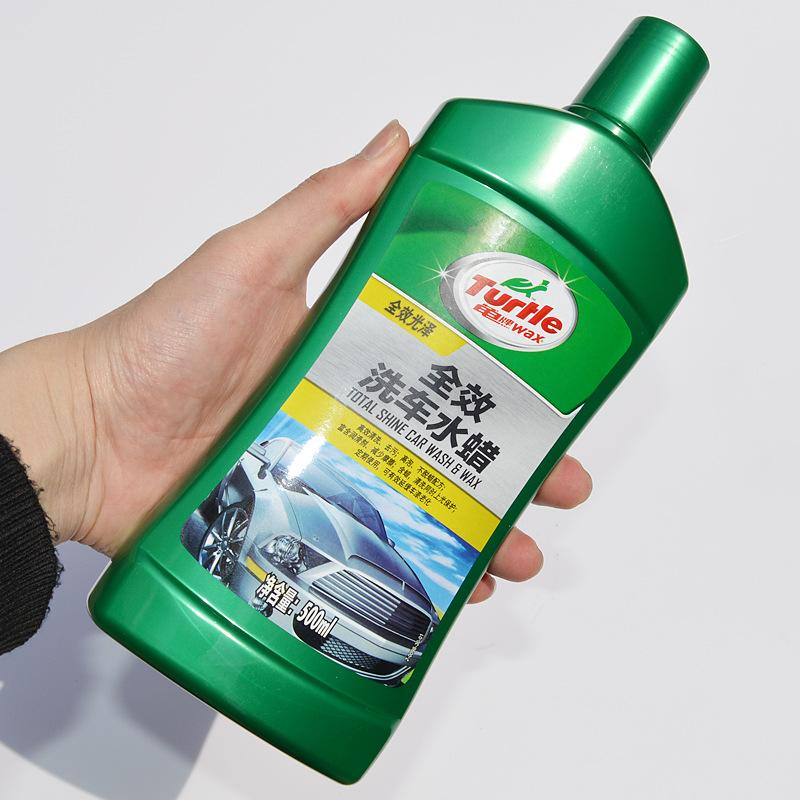
Source: Microsoft Bing
Generally speaking, sealant is better than wax because it significantly improves durability, excellent paint protection, and excellent gloss. Wax can provide a slightly better gloss, but at the cost of durability and protection. Therefore, combining the two is an attempt to achieve the best of both worlds.
Cleaning Procedure
The manufacturing, texture, and use of carbon fiber components are completely different from those of metals. That is to say, using the same maintenance techniques as the metal on carbon fiber may damage it. To prevent any damage, it is recommended to follow the following steps to maintain the carbon fiber body area.
Pre-washing and Rinsing
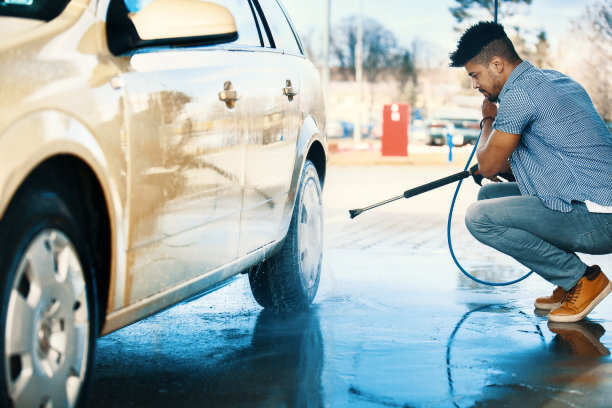
Source: Veer
Pre-cleaning is necessary for thorough cleaning afterwards. Firstly, rinse off any loose dirt or debris on carbon fiber car exterior using a hose or high-pressure cleaning machine. This will help loosen any stubborn dirt and make cars easier to clean.
Washing with Car Wash Soap and Water
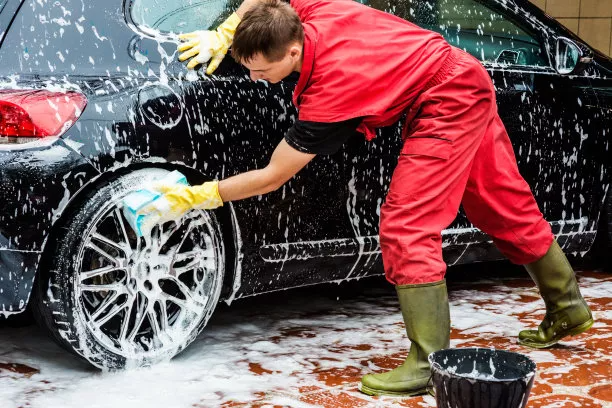
Source: Veer
For washing, you can use a specialized car wash detergent. Mix a small amount of mild car wash soap or liquid with water, immerse a microfiber towel or soft bristle brush in the solution, and then use it to wipe the surface of carbon fiber components. When wiping, be sure to work in a circular motion to avoid wiping the surface.
Drying with a Microfiber Towel
After thoroughly cleaning the surface of carbon fiber components, rinse off with clean water to remove any residual soap or dirt. You can use a clean microfiber towel to thoroughly dry the components. By constantly flipping the microfiber towel, most of the dirt, dust, and fingerprints can be wiped away to achieve a striped luster.
Using a Clay Bar to Remove Contaminants
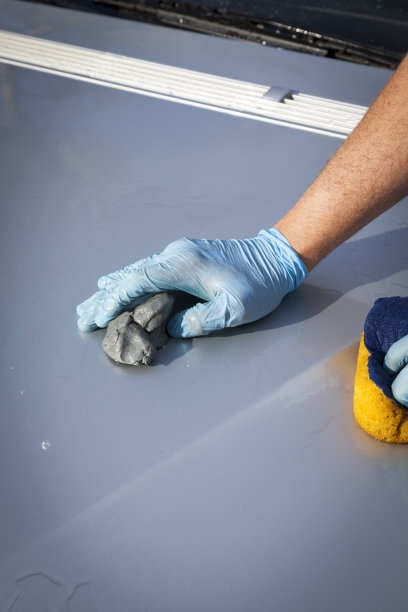
Source: Veer
Spray clay lubricant on the exterior of the carbon fiber car to make the area not only foggy but also saturated, while gently spraying the clay disc to obtain additional lubrication. Next, press your hand flat and use your fingers to nail the clay plate onto the car. Rub left and right or up and down, using sufficient pressure to prevent the clay from falling from your hands. Repeat the process of friction until you cannot see any pollutants.
Applying Quick Detailer Spray
If you think the car surface is still not shiny enough, you can evenly spray the detailer spray on your microfiber towel, and then gently wipe the surface.
Applying Wax or Sealant for Protection
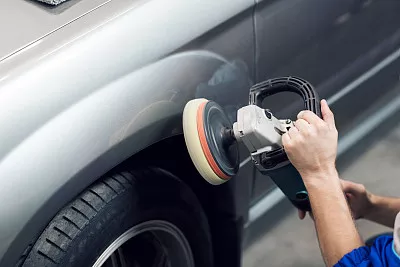
Source: Veer
Once your car is completely dry, it’s time to apply a layer of wax. It is recommended to use a cloth instead of a machine for waxing. This is because running the machine at a certain speed may damage the top layer of carbon fiber. Finally, use car sealant and overlap the product onto the car components. After polishing and drying, removing excess products completes the cleaning and maintenance of carbon fiber cars.
Maintenance Tips

Source: Veer
In addition to regular maintenance, some preventive measures need to be taken to extend the service life of carbon fiber automotive parts. Here are some tips for maintaining carbon fiber body components.
- Regular washing and drying
Dirt and debris can accumulate on the surface of carbon fiber automotive parts, damaging their luster and texture. Therefore, it is necessary to clean carbon fiber automotive parts at least every two weeks. If you find it difficult to clean regularly, seek assistance from a car wash service as appropriate.
- Avoiding harsh chemicals and abrasive materials
The use of non specifically designed irritating chemicals for automobiles can seriously damage carbon fiber components. If there is any damage to the texture, you may need professional personnel to polish and repair the carbon components. Therefore, it is recommended to use car friendly products.
- Using a protective coating for added durability and shine
The protective coat not only provides extra shine, but also serves as a defensive layer. It to some extent avoids small scratches, fading, and discoloration of carbon fiber components.
- Seeking professional detailing services for deep cleaning and restoration
Personal understanding of carbon fiber vehicles is limited. If possible, you should seek specialized automotive services at least once a year, especially regarding the internal condition of carbon fiber car interior. Only professionals can make accurate judgments.
Common Cleaning Mistakes to Avoid

Source: Microsoft Bing
- Using abrasive materials or harsh chemicals
It is particularly important to avoid using irritating chemicals or harsh materials when cleaning, polishing, or waxing carbon fiber components. These can damage the surface of carbon fibers and reduce their strength and durability.
- Scrubbing or rubbing too hard
The strength of cleaning or polishing carbon fibers is important, and applying too much Scrubbing or rubbing can also cause damage to the vehicle body. Gently wiping can maintain the lifespan of the carbon fibers.
- Neglecting to dry the car properly
One of the important steps in washing a car correctly is to dry it, which is often overlooked and overlooked by inexperienced individuals, but it can have a significant impact.
There are many reasons why you should dry your car correctly, whether it’s for paint safety or for the overall smoothness and appearance of the car. Using flowing air to dry the vehicle can be considered one of the better methods, as you do not need to have any contact with the painted surface. But at the same time, letting your car air dry can result in more obvious water stains remaining on the paint surface.
- Using a dirty or old microfiber towel
Dirty microfiber towels or old towels may leave scratches. Microfiber towels are made of polyester, and if not properly dried or used for too long, the internal structure of the towel may change. Before using microfiber towels on delicate surfaces, be sure to check their condition.
Conclusion

Source: pixabay
If you own or are considering purchasing a carbon fiber car, then you need to know how to properly clean it. This guide provides you with the basic information required to clean carbon fiber vehicles, from cleaning supplies to cleaning precautions. The above tips will make your carbon fiber cars look refreshed and maintain a longer lifespan.






